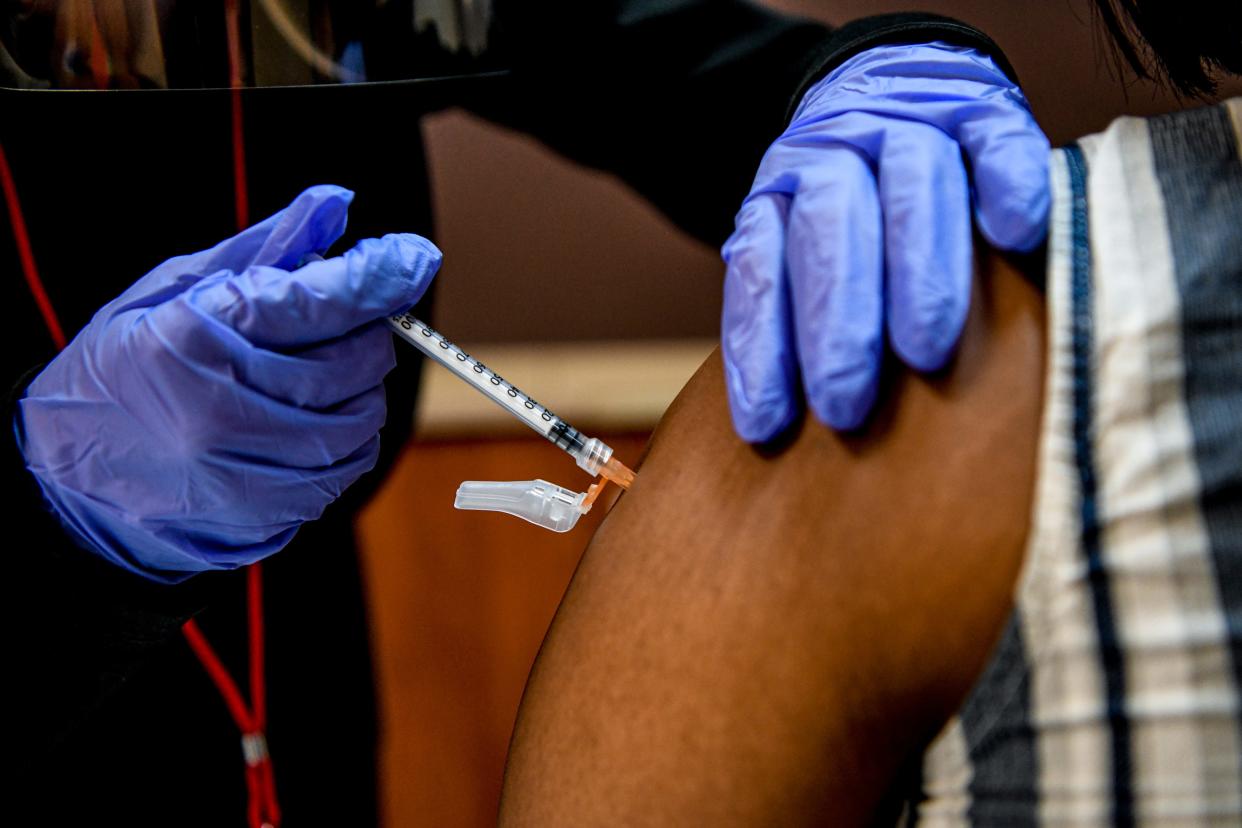COVID in Florida: Wave appears to be flattening with new infections, hospitalizations holding steady

- Oops!Something went wrong.Please try again later.
The latest coronavirus surge across Florida appears to be slowing, just as the school year starts.
COVID-19 hospitalizations have been stable the past few weeks. Viral concentrations in sewage have dropped. Testing positivity rates statewide have declined. And Florida’s official caseload remains flat.
Hospitals statewide tended to 4,281 COVID-positive patients, the U.S. Department of Health and Human Services reported Friday. The statewide patient counts for the disease have hovered around 4,000 to 4,300 since mid-July after steadily rising for months.
Deaths on the rise: Deaths from COVID-19 in Florida take off amid undercounted cases in BA.5 surge
COVID policies in schools: COVID policies to LGBTQ law: 8 things to know as Palm Beach County goes back to school
What to know about BA.5: The BA.5 'ninja' COVID-19 variant is now dominant in Florida. What that means, and what to do
About 488 adult COVID-positive patients are in intensive care units, representing about 11% of patients ages 18 or older. That ratio has barely changed since the coronavirus’ omicron strain tore through Florida this past winter.
Latest COVID wave smaller but longer
Omicron subvariants have fueled the latest surge of infections, hospitalizations and death. The latest wave has been smaller than the original omicron variant and the deadlier delta variant before it, but it has lasted longer.
Omicron subvariant BA.5 has been found in more than 85% of COVID tests nationwide in the week that ended July 30, the latest data reported by the U.S. Centers for Disease Control and Prevention shows.
The subvariant comprises virtually all coronavirus particles found in sewage in water treatment agencies across Florida, analysis conducted by Boston-based laboratory Biobot Analytics shows.
The number of viral molecules found in samples of Tampa Bay wastewater has fallen in the two weeks ended Wednesday by about 57% in Hillsborough County and about 30% in neighboring Pinellas County.
Over the same time period, Central Florida sewage shows viral levels declining by about 53% in Orange County, home to Orlando, and 29% in neighboring Seminole County.
Miami-Dade County recorded a 17% drop. Palm Beach County logged a 3% dip.
The latest surge has infected an untold number of people. With the rise of at-home testing, many cases go unrecorded in official government statistics. An average of more than 40,000 tests have been performed daily statewide since July, the lowest number since May 2020.
Number of positive tests around 24%
Still, the share of professionally conducted tests coming back positive statewide has hovered around 24% since July after rising steadily since spring, following a similar pattern as hospitalizations.
Florida continues to log an average of about 10,000 new cases daily, a number that has barely changed since late May, CDC figures released Friday show.
Florida’s COVID death toll climbed by 482 people since state health officials last published their biweekly report on the disease July 29. That’s the most fatalities in a week since late March. Deaths can take weeks to be processed and inserted into official statistics.
At their peaks, omicron and delta drove Florida’s death toll up by more than 1,000 weekly.
Those previous surges caused the most infections during the start of new school semesters. While the current infection looks like it’s hitting a plateau, more could come as the least-inoculated age groups return to school this month.
An estimated 1.4% of children younger than 5 across Florida have gotten at least one shot in their arms, the CDC reported Friday. That’s the sixth-lowest rate in the nation. Kids in other large states are far more likely to be inoculated, such as California (5.6%) and New York (4.3%).
Just 27% of Floridian kids ages 5 to 11 are vaccinated, while the rates in New York and California are 45% each, and 38% in Texas.
Just under 17.3 million people statewide have gotten vaccinated, the CDC says, a number that has barely budged in weeks. It’s also more than 1 million people higher than what state health officials count in their biweekly reports in part because the CDC includes federal personnel stationed in Florida in its vaccination tally.
Even with some 80% of Florida’s population vaccinated, by the federal government’s count, infections and hospitalizations remain so high that the CDC recommends wearing masks indoors in every Florida county except three — Glades, Washington and Franklin— to avoid straining hospitals with more patients.
Local governments cannot enforce widespread mask requirements because Gov. Ron DeSantis has stripped them of their ability to fine rulebreakers.
COVID-19 has infected more than 6.8 million Floridians and killed 78,047.
Chris Persaud is The Palm Beach Post's data reporter. Email him at cpersaud@pbpost.com.
This article originally appeared on Palm Beach Post: Florida: COVID BA.5 surge could be on its way out; numbers steady

